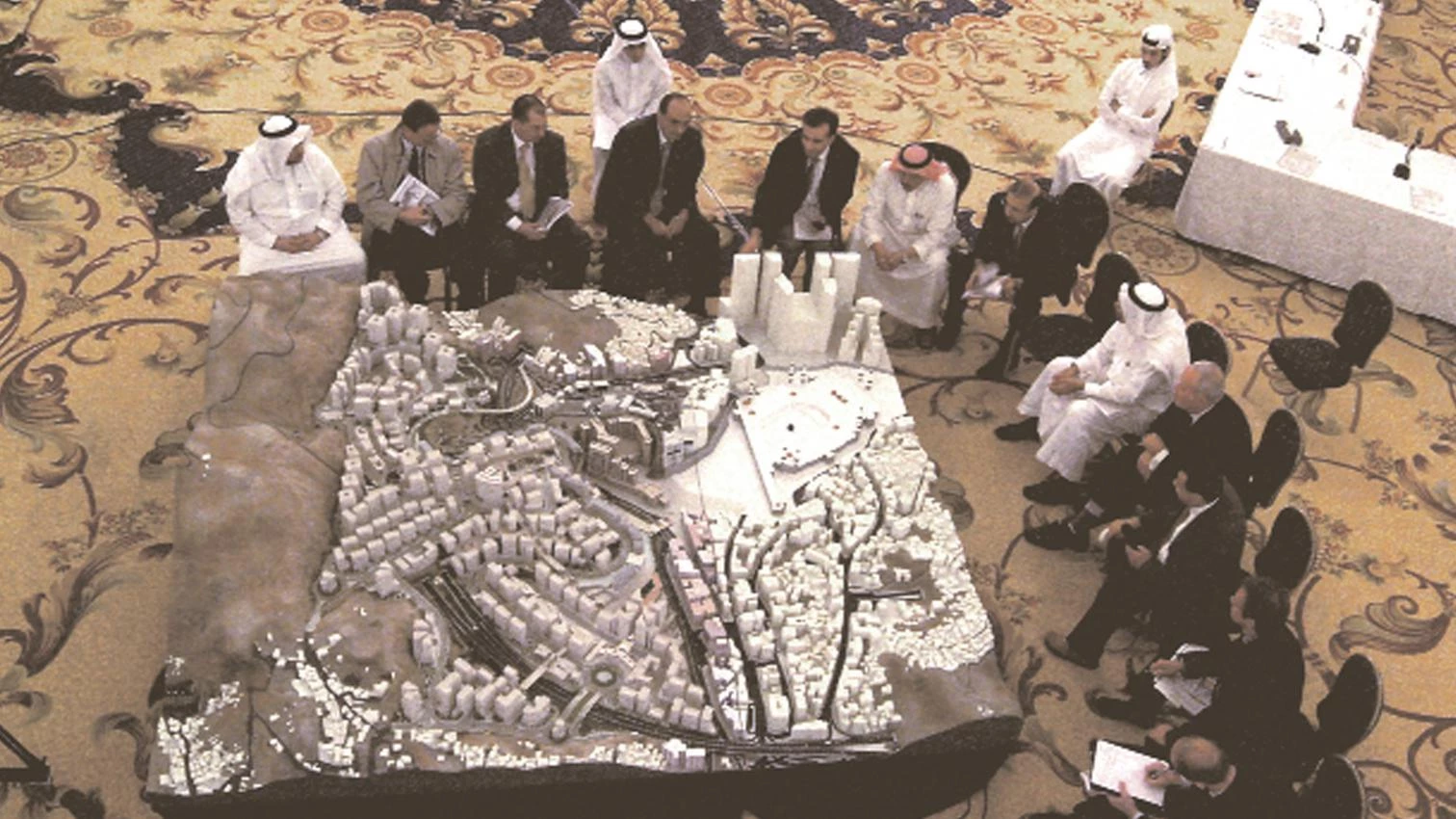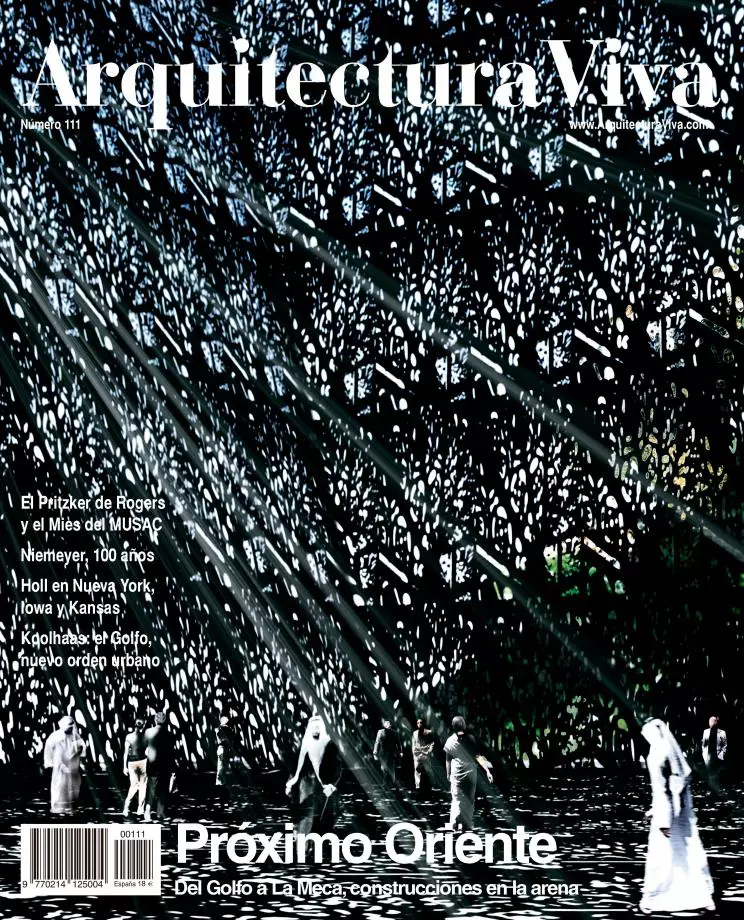
The Persian Gulf was first associated with oil, then with weapons and today with real-estate, but wells, aircraft carriers and skyscrapers are terms of an equation that links energy, war and construction in a vicious triangle. This powder keg of the planet is being quickly urbanized with Western patterns and global capitals, in the hot core of an Islamic world fractured by conflicts and driven both by humiliation and defiance. The real-estate, financial and touristic development of the small Gulf estates takes place in a geopolitical frame delimited to the south by the Saudi theocracy, to the north by the almost nuclear Iran of the Ayatollahs and to the west by a string of crises that rip from Lebanon and a divided Palestine to an occupied, civil war-torn Iraq.
It is not fair to present the trophy architectures of these islands of prosperity without making reference to the ocean of storms surrounding them, and here we have tried to depict this context both through the description of the offensively unequal social system that supports them and through the extension of the journey along the Gulf coast to the interior of the Arabian Peninsula, with an incursion in Mecca that highlights the paradoxical contrasts of the Wahhabi hypermodernity, that raises skyscrapers around the Kaaba and connects it with a high-speed train to Medina while the non-Muslim designers are banned access to the holy cities, and while in the Arabia Felix of Yemen, at the other end of the Peninsula, Al Qaeda and mysery live side by side.
In the Western imagination – and even more so since 9/11 – Muslims are ‘the other’, and it is not possible to speak of the real-estate boom of the Gulf as an urban experience devoid of its Arab setting, hardly more than a last chapter of the modernization episodes already experienced in Asia’s Pacific rim. The Islamist terrorist attacks have fed the conscience of a conflict of civilizations that in some European countries is added to their difficulty in integrating Muslim immigration, and even to the epic origins of their own identity, from La Chanson de Roland to the Cantar de Mío Cid. Advocating the existence of an Islamo-Christian civilization, evoking the success of the term Judeo-Christian to fight anti-semitism, is a well-meaning but hazy hypothesis.
The spectacle architecture and generic urbanism of the Gulf are spurious fruits of Western modernity: the closest thing to a real-estate fair in Kuwait or Dubai is another one in London or Cannes. In the meantime, the West and Islam get caught up in a web of misunderstandings and reproaches that go from the use of the veil or the Mohammed caricatures to the Pope’s speech in Ratisbona, and which have their architectural dimension in the controversies about minarets in Switzerland or Germany and about mosques in Great Britain, the Netherlands or Spain. These are religious wars similar to past ones between Catholics and Protestants, and if the Gulf offers the draft of a material and symbolic convergence, then the Near East may well become our dark near future.





